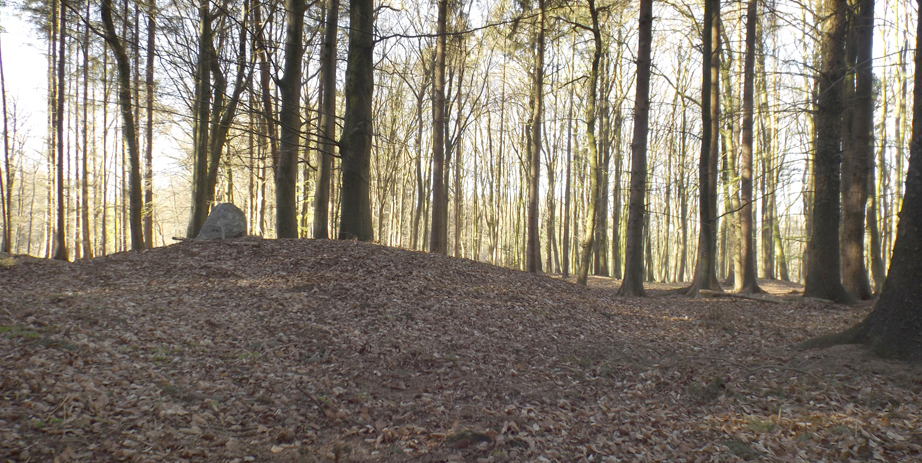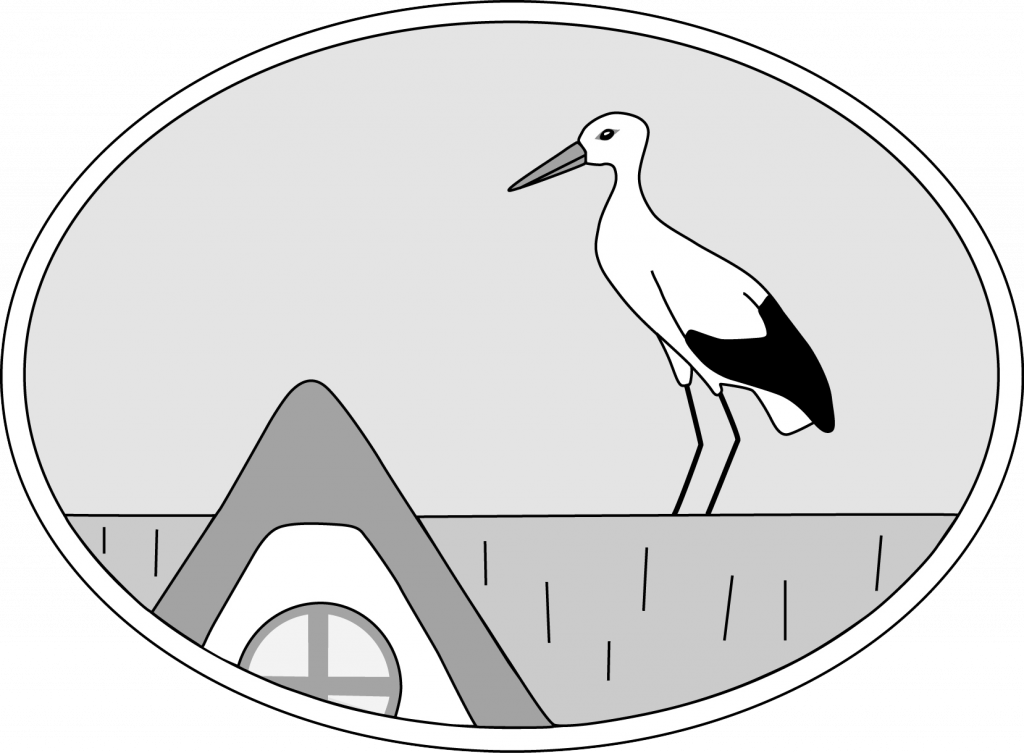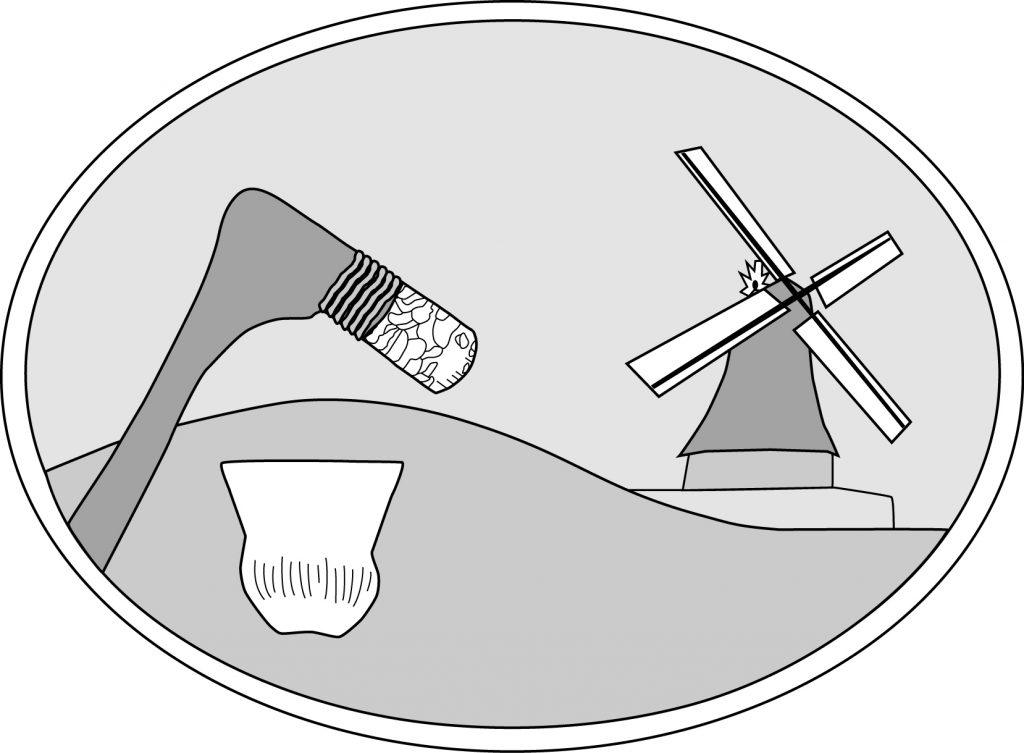
In the forest near Brunsholm there are at least 38 burial mounds, the “Hülsbarge” (Hüls meaning holly and barge meaning hills). The largest mound is still about 1.3 m high and measures about 24 m in diameter. The whole mound is occupied by a large fox burrow, accounting for the name “Voßbarg” as the wooded area is popularly known. Until the middle of the 20th century, many of the burial mounds still had a border of boulders, but these have since been almost completely dug out and taken away. Since no excavations have taken place so far, the exact dating of the burial mounds is uncertain. However, due to their construction, shape and size, it is assumed that the mounds were built in the early or middle Bronze Age (around 1800-1200 BC).
Their location on a ground moraine is also typical for the Bronze Age. The terrain, which was certainly unwooded at the time, slopes gently downwards from there to the south and provided a good view to the west over the Treene marsh. The burial mounds were also clearly visible from the marsh and were impressive landscape markers: Due to erosion, ploughing, and forestry, the mounds today are much flatter than they were when they were built.
In contrast to the megalithic tombs, these burial mounds were not built for a whole community, but usually for individuals, but additional persons were often later buried in the same mound. However, it is assumed that not all the members of a community who died were buried in such graves: Due to the huge amount of work involved, the dead buried in burial mounds are more likely to have been socially higher-ranking individuals. Tree coffins made of whole or halved hollowed-out tree trunks were often used for burial. These were generally surrounded by a mantle of stones and then covered with earth. The dead were usually buried with grave goods, these could be weapons, tools or clay vessels containing food or drink, in addition to the jewellery adorning their clothing.
You can go into a reconstructed burial mound in the Dithmarschen Stone Age Park in Albersdorf.



